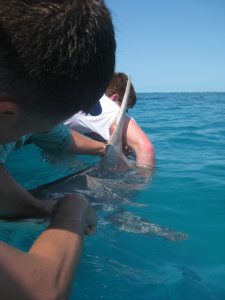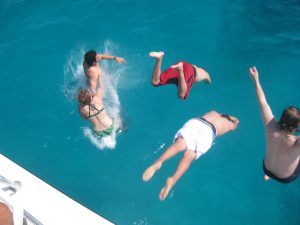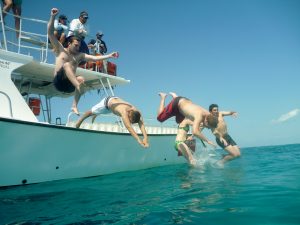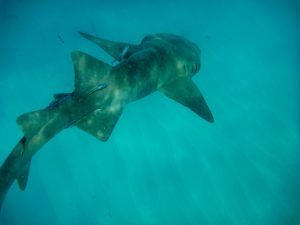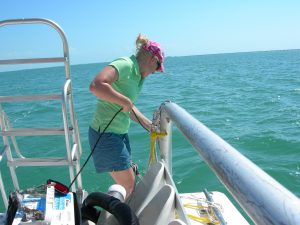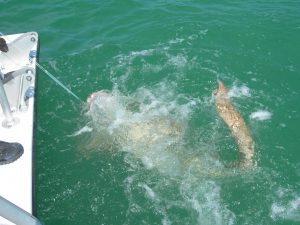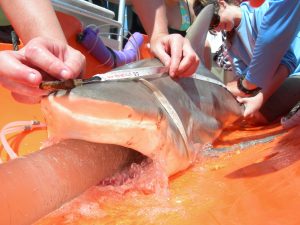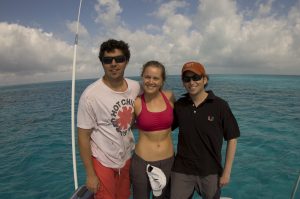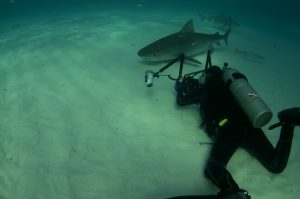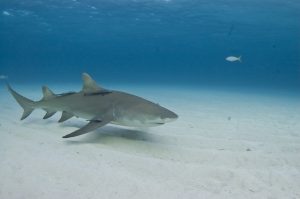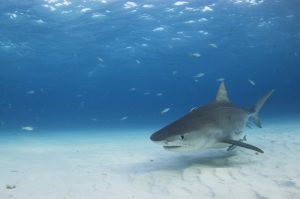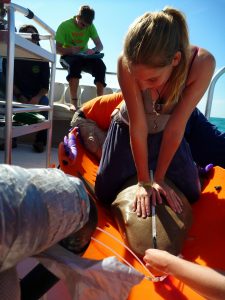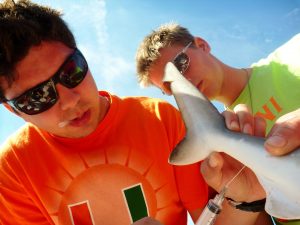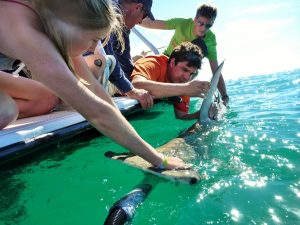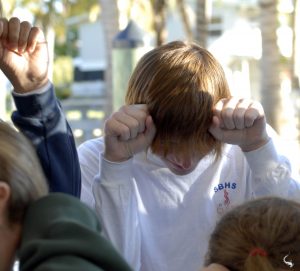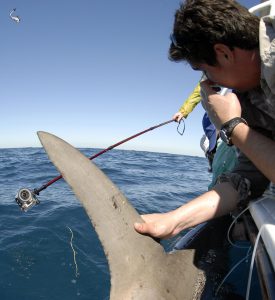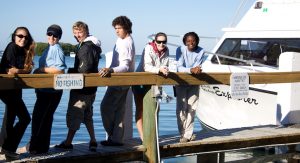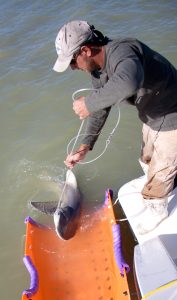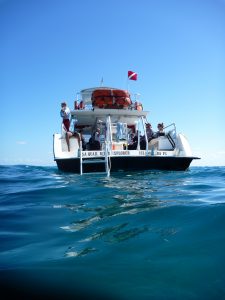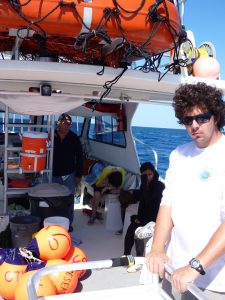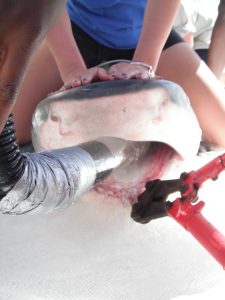Sunday December 5th 2010
On Sunday we had a film crew onboard shooting for a show for the History Channel that will air in February, so we were all hoping we would get something that we could satellite tag for the cameras, which we did, read on!! We also had some new things going on this trip, one of which was the new shark sling made by Captain Curt to make things run easier, smoother, and safer for both the sharks and the shark team. This weekend was the first time we used it, and while I heard it worked great on Saturday, it was wonderful on Sunday too. The first two sharks of the day were two massive nurse sharks, the first was probably the biggest nurse shark I have ever seen, and many other interns agreed. Normally we wouldn’t bring nurse sharks onto the boat, and we’d work them off the back instead because they have a tendency to roll and are very strong and difficult to work with. We brought these two onto the boat using the sling though, and everything worked so smoothly! The angle of the sling prevented them from rolling, rendering them very cooperative for our team, and we were able to measure, tag, and get sex quickly and efficiently.
Another new set up we had going on Sunday was the use of small Go Pro cameras rigged onto each line, recording video facing the bait. These cameras will allow us to see how any bait goes missing from the hook, for example, if a shark is able to take it and avoid being hooked, what type of shark it is and how it’s done. With these cameras on the line we are also able to watch how the sharks that we do pull in take the bait and get hooked. These videos can tell us a lot about the predatory feeding behavior of these sharks, whether they are timid about taking the bait, taking a few passes before finally slowly coming in to take it, or they come straight out of no where for the bait, with no hesitation. Nurse sharks, for example, are thought to utilize a sort of sucking motion when feeding, almost inhaling their food. These cameras will allow us to analyze these rarely seen feeding behaviors.
With the cameras on each rig, we put out fewer drum lines, and the day started slowly. We pulled in quite a few empty hooks, and began to speculate that maybe the sharks were taking the bait, but upon feeling the weight of the camera on the line, spitting it out. The use of these Go Pros on our lines is new, and with anything new there is always trial and error to work out the kinks. As the day went on, however, we pulled in those two massive nurse sharks, and spirits soared. The school kids we had on the boat were all very excited, and each was able to feel how strong the skin of a nurse shark is, and see the amazing animal first hand. It was explained to both them and the camera team that nurse sharks have the strongest skin of all sharks, which is why we aren’t able to take biopsies, which we usually do with other sharks. Dr. Hammerschlag also explained to them how to tell the sex of a shark, pointing out the mature claspers of the male nurse shark.
Our luck got even better, and the highlight of the day came when we pulled in a gorgeous 240 cm female great hammerhead! Neil quickly suited up and slipped into the water to take underwater pictures as we pulled her closer to the boat. Again, the sling worked beautifully and we were able to quickly get our data and fit her with a brand new fancy satellite tag of her very own. This allows us to track these sharks’ movements in real time, when the shark surfaces, the tag on its dorsal fin sends a signal to us with its location! If you have not done so already, you can check out our shark’s movements and track them yourself using this link: http://www.sharkresearch.rsmas.miami.edu/learning-tools/follow-sharks/
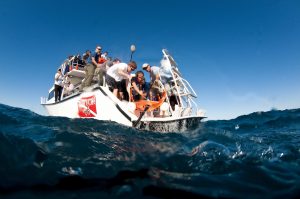
Releasing the lady Hammerhead. (Click to Enlarge)
As we carefully released her, Dr. Neil was able to get an awesome shot just as she was spitting the ventilation pump out of her mouth. This pump is inserted into the shark’s mouth and forces water over the shark’s gills so that they are able to breathe. Most sharks are obligate ram ventilators, which means that they must keep moving in order to pass water over their gills to breathe, the pump does this for them while we work with them on the boat. Nurse sharks are an exception to this rule; they have spiracles, small visible openings behind their eyes that allow them to pull water over their gills.
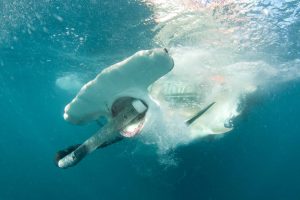
Spitting out the ventilation pump. (Click to Enlarge)
The last catch of the day was a very small Atlantic sharp nose shark. Due to its small size, Dr. Neil was able to easily hold it up and show off its ampullae of lorenzini for the kids and the cameras. He explained that these tiny dots along a shark’s nose, head, and lateral line are its electro sensory organs, and showed them how it reacts when they are stimulated.
Overall it was a great day out on the water, as it always is! The idea is that every person we bring out with us is able to leave that day with a new appreciation of these amazing fish, and how important their conservation and the work we do with them really is. Sharks are faced with huge declines in their populations all over the world. We can only hope that every satellite tag we can put out, every person we can share this experience with and educate, and every day we can devote to research and the fight for their conservation, is another step toward public awareness, knowledge, and change.
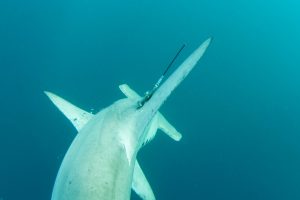
Hammerhead with her new tag. (Click to Enlarge)
Fiona Graham, RJD Intern
